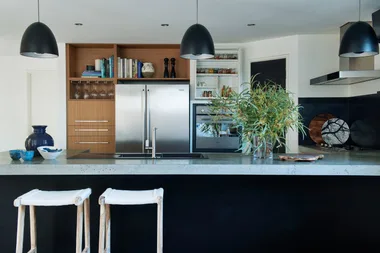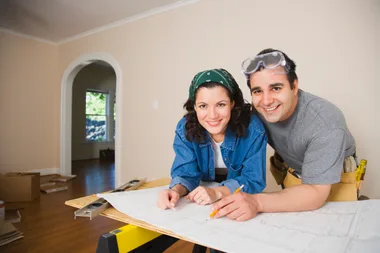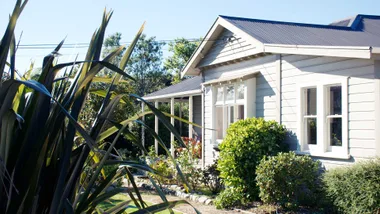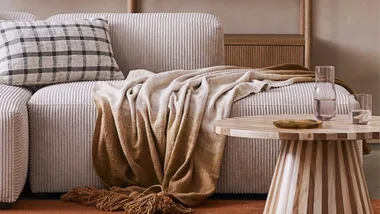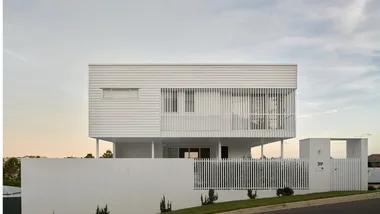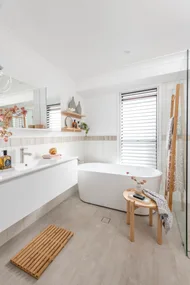When your wardrobes and cupboards are overflowing with stuff that you’re not quite ready to declutter, there’s only one solution: A walk in wardrobe.
WATCH: How to organise your linen cupboard
What is a walk-in wardrobe?
A walk-in wardrobe is a closet space that has enough room for a person to enter and walk around, and is made to fit one-person, they can store and organise all your clothes, shoes, accessories and even jewellery in an easily accessible way. It can be a small or a large room that has enough space for more than one person’s clothes and can be decorated with a chair, mirror and lighting features.
What functions should every walk-in robe have?
Getting the size and space right is key to a successful walk-in-robe. They’re most suitable in a larger bedroom and typically located next to, or in line with, the ensuite. If designing for a couple there needs to be enough space for both to store their belongings and get dressed without feeling cramped or uncomfortable.
“A good walk-in robe should be a sanctuary; a place of order and organisation,” says interior designer Bronnie Masefau. “One important thing that is often forgotten is a space to place things at the end of a long day. This could be the top of a drawer unit, an upholstered ottoman or stylish chair. Having a dedicated area to rest or air your goodies between hanging them or wearing them means you’ll be less likely to develop a messy ‘floordrobe’.”
Furthermore, opportunities for storage and organisation should be identified and maximised before the design is finalised in order to achieve a functional robe. “Organisation is key to a successful walk-in wardrobe. Dividers are a great way to section off your winter and summer clothes, and for put items that you need quick access to in open shelving.” says interior designer Lydia Maskiell, of the Tasmanian business Lydia Maskiell Interiors.
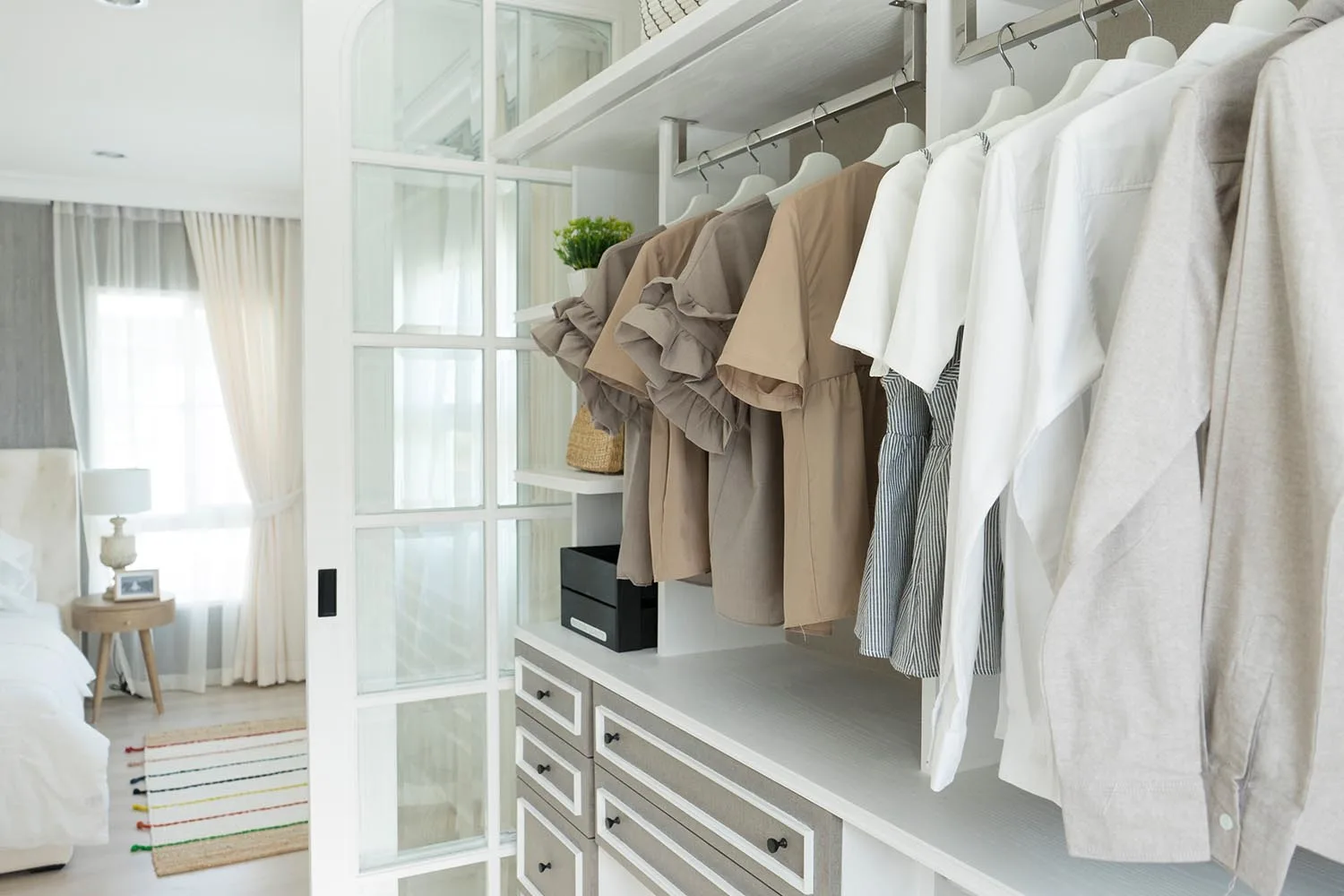
What design elements should every walk-in closet have?
A walk-in robe is a room like any other design idea, and as such the design of it should have personality. “Getting dressed should be an experience, not a chore. Place items of visual value at eye level, such as bags, shoes, accessories, a tie or a watch collection. Don’t be afraid to display artwork in this space,” says Bronnie.
Connect your walk-in-robe with your bedroom with a similar colour palette, materials or lighting. “If the walk-in wardrobe doesn’t get any natural light then look to using cool artificial light over warm light, as this will allow you to see your clothing better. If you do have the space for a sit-down make-up area, ensure you have an even distribution of light for makeup application,” says Lydia.
When it comes to flooring, Lydia advises giving it careful consideration, “A walk-in robe is a luxury space so make it feel luxurious with soft carpet.”
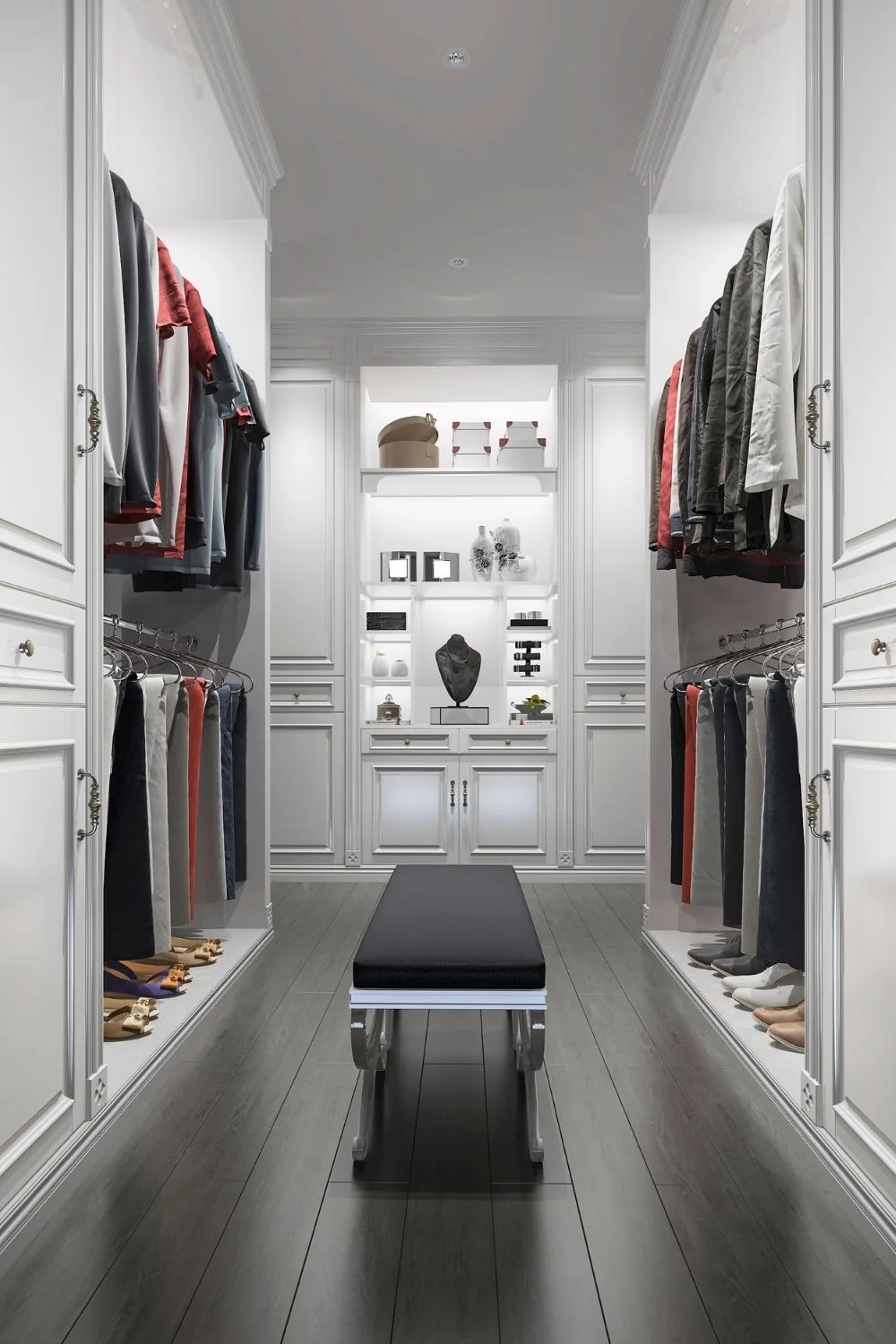
Tips for walk-in wardrobe design if you’re on a budget
Your design plan shouldn’t be limited by your budget, get creative with what you have and come up with unexpected design ideas.
“Even if your budget will only allow you to use white melamine board, get creative by using wallpaper or painting the walls with a pop of colour behind open-shelving. This will save you money on a backing board and look great. You should also take your robe to the ceiling. It’ll give you a sense of height in a space that’s normally small. If the budget doesn’t allow you to do this, add some baskets to create visual height,” says Bronnie.
Another way to keep your renovation budget on track is to create a feeling of space by using visual tricks, “Make use of mirrors and a rug or upholstered item which are fabulous for adding warmth on a chilly mornings. Make a list of what you’d like your walk-in robe to hold and if you can afford it, speak to an expert planner or engage a designer.”
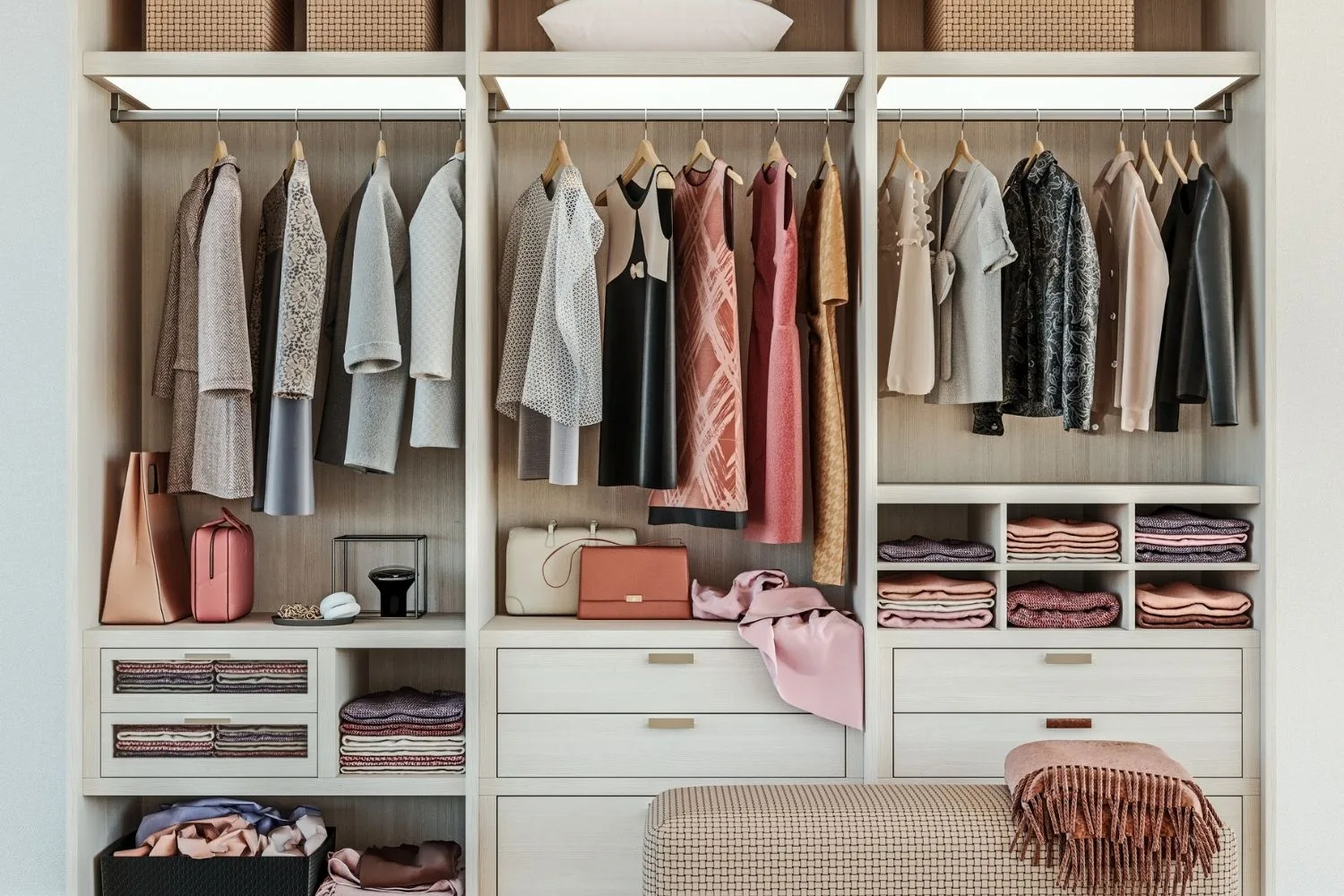
What do people who DIY their walk-in robe need to remember?
“One mistake many people do is to not secure the rails for hanging clothes properly,” says Bostik renovation specialists Mark Menagatti and Adrian Franchina. “Ensuring the rails are nailed and glued and that the rail will be able to carry the weight, means it won’t fall down.”
“Another thing to remember is the spacing between the shelves: you want to measure it out, so it can fit the items you plan to have on the shelf. Plan it well and remember that t-shirts and singlets don’t take as much space as knits for example.”
Top 4 tips for building a walk-in wardrobe
1) If you’re going to build the walk-in from scratch, spending some time researching strong timber, rather than going for a flatpack solution.
2) Before jumping into the design brainstorm how you envision your wardrobe to be used and plan it to suit your needs. For example, if you have many suits you may want a longer rail.
3) As you want your walk-in wardrobe to stand the test of time and not fall apart, I always use a suitable timber glue and then add nails to ensure its secured.
4) Make sure to maximise the space and take advantage of every single centimetre, even if you have a small walk-in wardrobe, leverage the space up to the roof because you can never have enough storage.

9 Walk in wardrobe design ideas
1. The luxury walk-in wardrobe
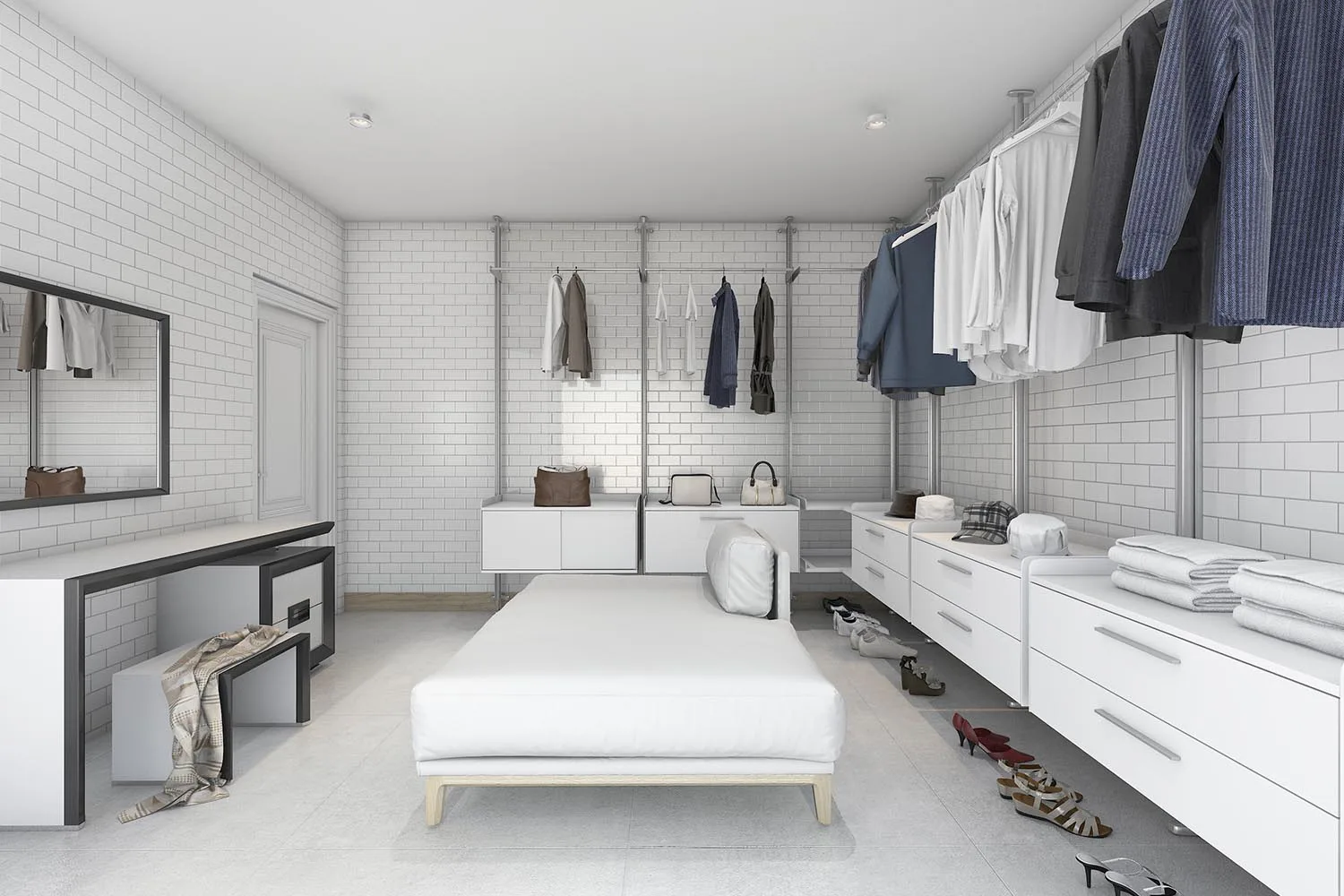
This all-white walk-in robe has plenty of hanging space, drawer storage and a dressing table laid out in a very spacious, minimal and simple floorplan. This layout it suitable to those who have space at their disposal and are looking to create a luxury experience at home.
2. The walk-in wardrobe with sliding doors

An excellent small-space solution, this walk-in wardrobe looks elegant and modern. The sliding doors clearly zone the space as a wardrobe, but the mesh construction actually creates a sense of space, rather than shutting the walk-in wardrobe off from the rest of the room.
3. The walk-in wardrobe with extra storage
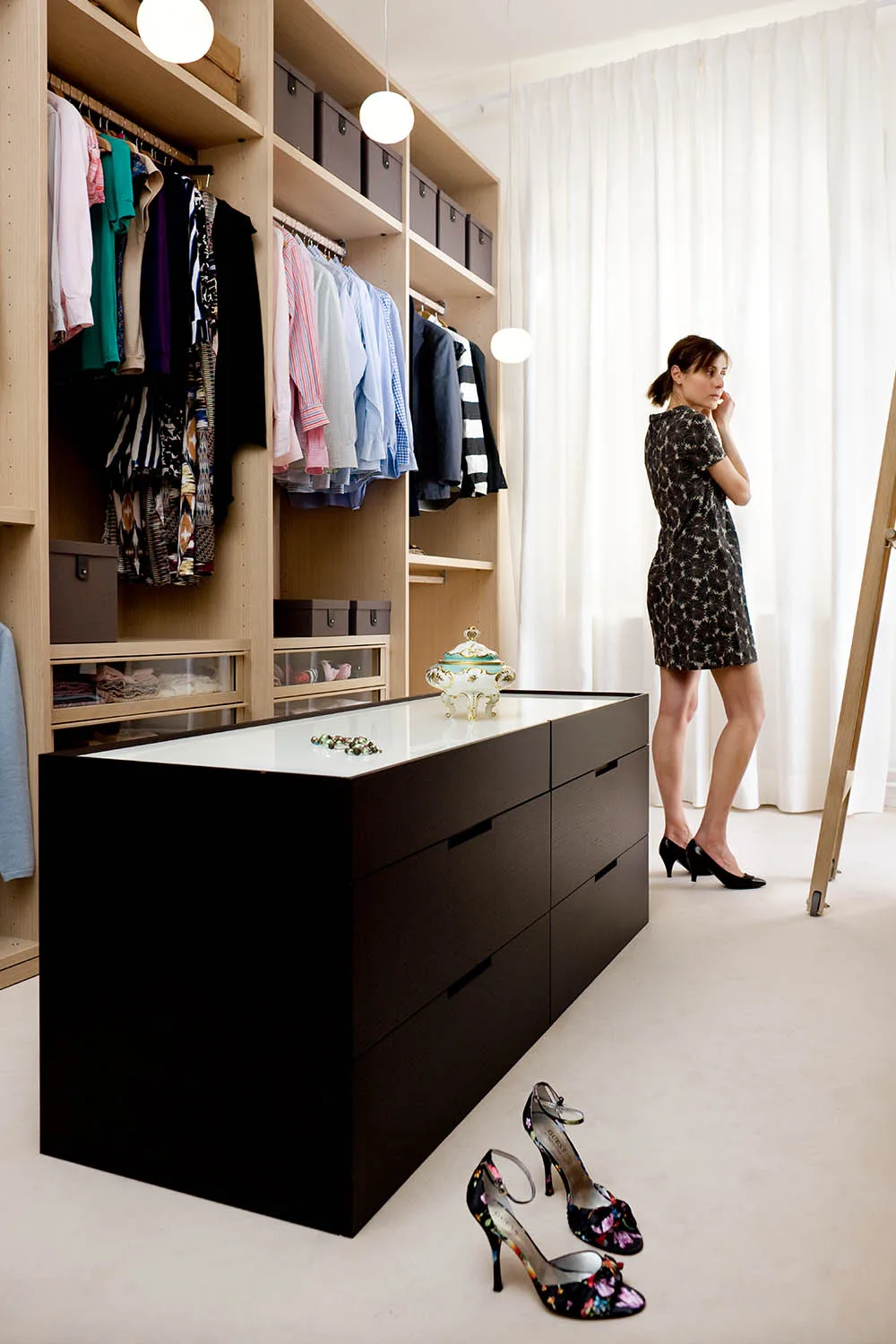
Although quite typical in design and layout – with hanging space and shelving on one wall, a centre space for drawers, and mirrors on the opposite wall – this walk-in closet has plentiful storage options that include hanging space, enclosed drawers, see-through drawer storage, basket storage and shelving.
4. The small walk-in wardrobe

Don’t feel restricted by the size you have available to you, it’s all about examining the space with a creative eye. Here, a small space has built-in cupboards on one side, a bookshelf filled with shoes at the end, and a large chest of drawers used as a dressing space. The result is a neat and tidy walk-in wardrobe that doesn’t need lots of floor space.
5. The supersized walk-in wardrobe
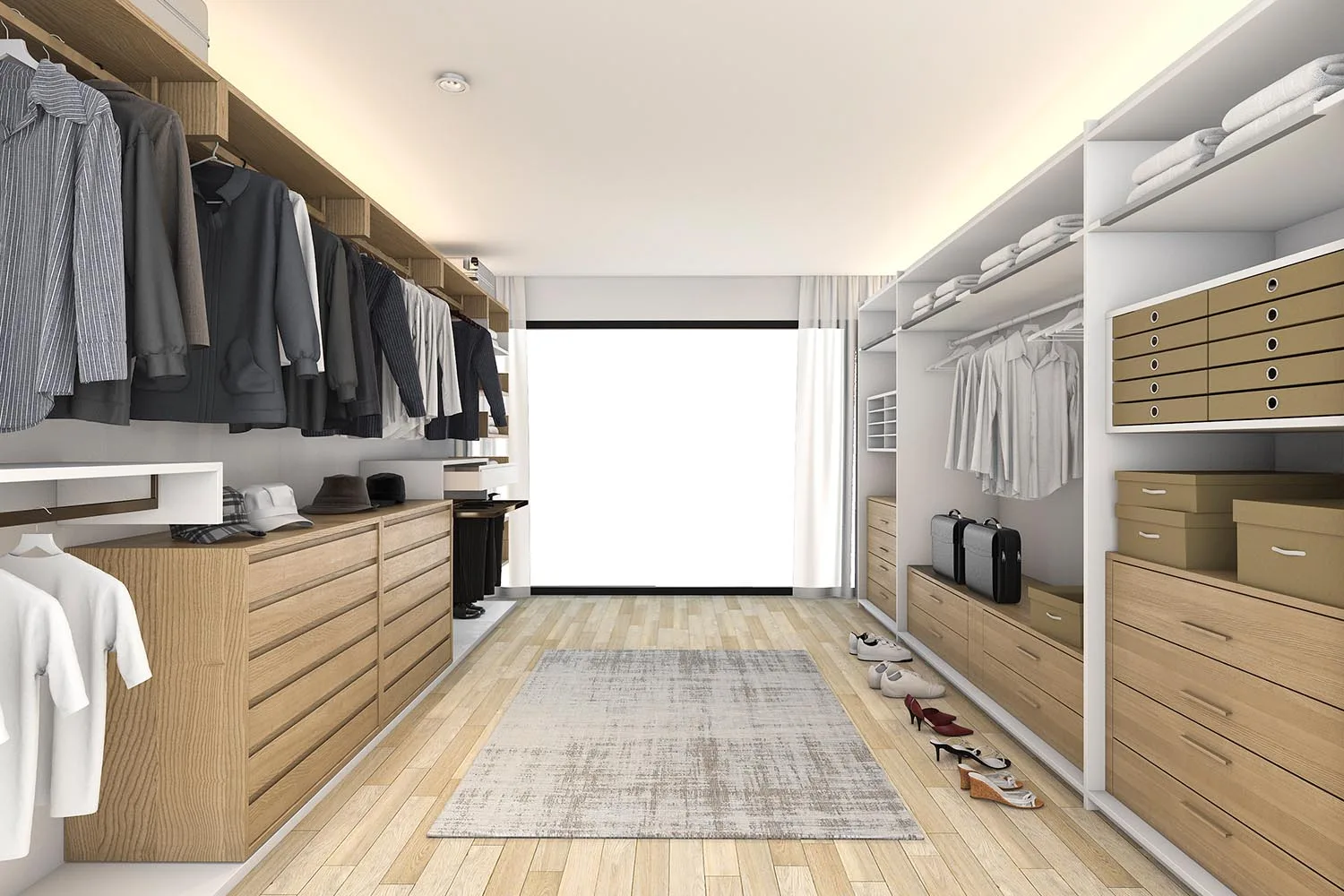
Taking up a large amount square metreage, this walk-in robe require time, money and space to complete. However, once complete, this space is pretty much the full package, with plenty of hanging space, lots of drawers in different sizes, extra shelving and compartments for accessories.
6. The walk-in wardrobe with extra shelving

Shelves are an incredibly important storage element to have in a walk-in wardrobe. They can be used for everything from shoes and accessories to knits, seasonal gear, tees and more. This walk-in closet has shelf space at multiple levels so you can prioritise what stuff needs to be in the most accessible positions.
7. The small and easy DIY walk-in wardrobe
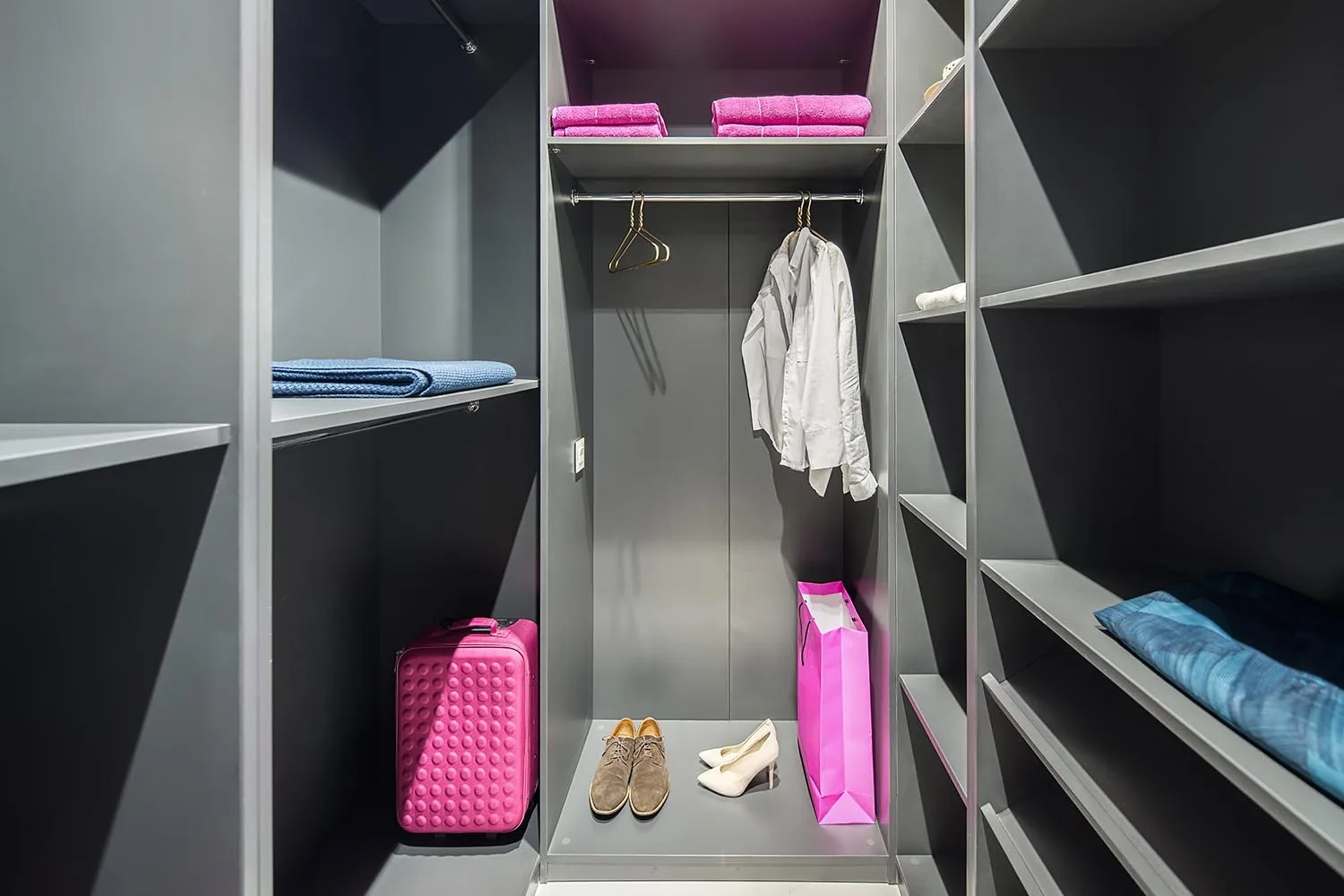
The easiest DIY walk-in robe is one that doesn’t require a huge commitment of time, money, space and energy, and this is it. A small space such as a large closet or old built-ins could be converted into a walk-in closet. Just add some flatpack shelving at multiple levels, a few extra spaces for hanging clothes and enough large storage compartments to cater to suitcases, ski gear or other seasonal essentials.
8. The room-within-a-room wardrobe
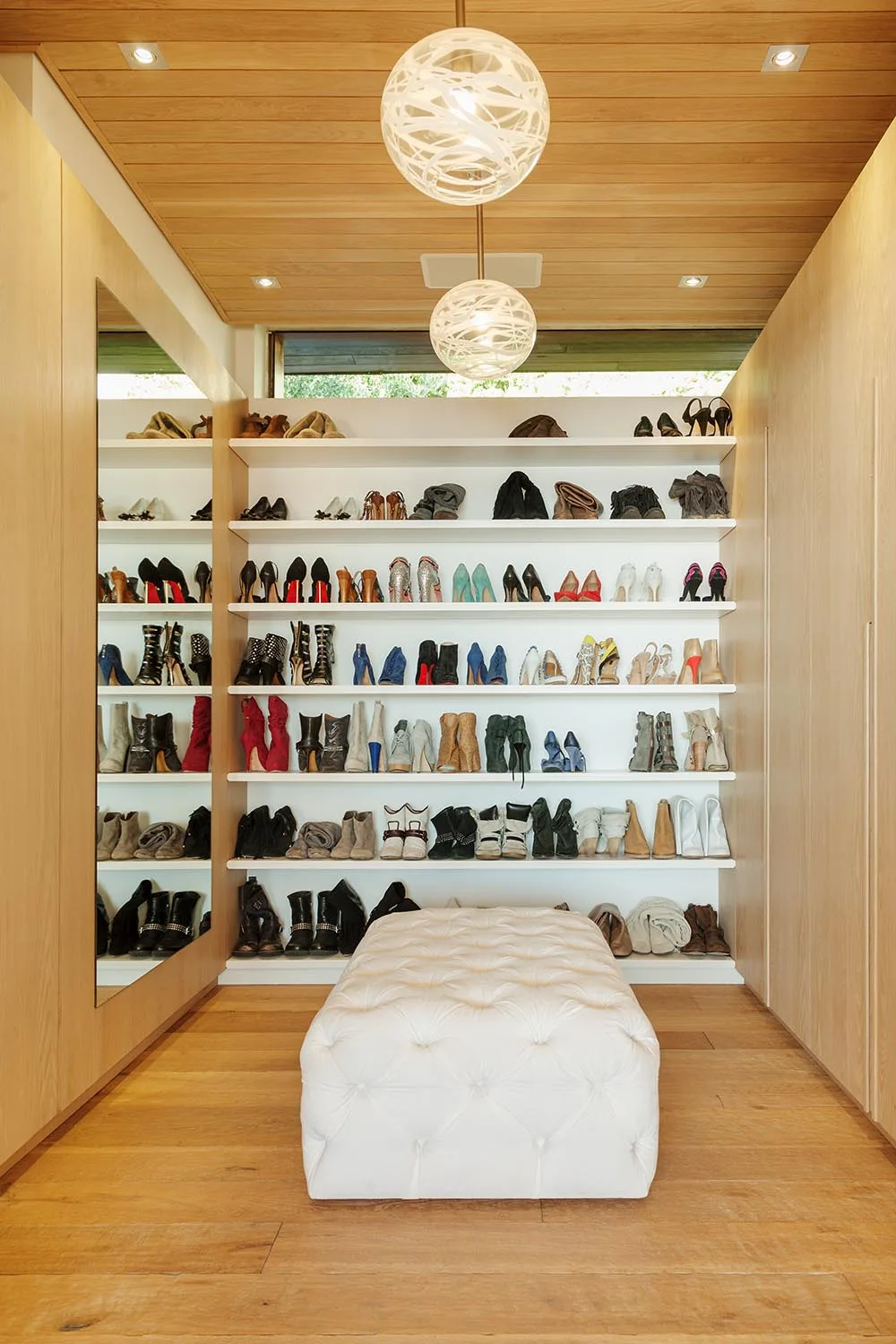
This unique approach to building a walk-in wardrobe involves building a small room within a larger room. As you can see here, the space above the walls is open and a window is visible beyond. This allows natural light and increases airflow in a smaller space. A medium-sized walk-in robe, this design idea is simple and elegant, with timber warming the space, white to keep it bright and pendant lighting to glam it up.
9. The multi-purpose walk-in wardrobe

If you need your walk-in wardrobe to fulfil many functions then this layout and design is something to look to for inspirations. Spacious, simple and easy to recreate using flatpack furniture or affordable Ikea alternatives. The multi-level shelving make storing all sorts of things easy, and using baskets will keep everything neat and tidy. The bench seat is a nice touch and gives the family a space to sit and remove shoes, or leave a handbag or coat to put away later.
